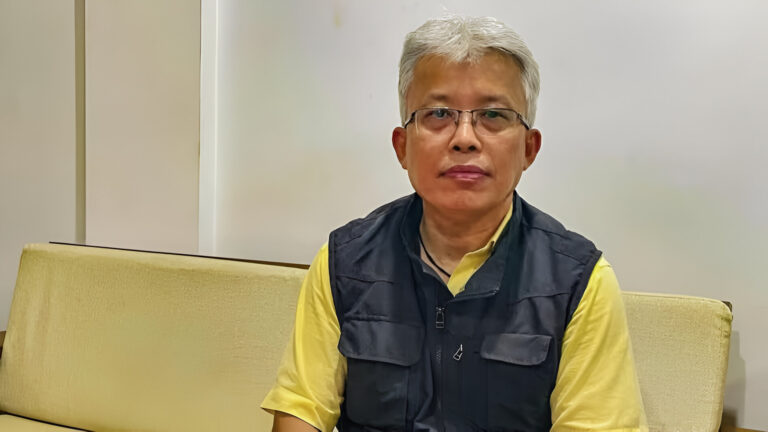Manipur Seeks UNESCO Recognition for Lai Haraoba Festival
Introduction: Preserving Cultural Heritage
Have you ever heard of a festival where gods themselves are celebrated through music, dance, and rituals? That’s exactly what happens during the Lai Haraoba festival in Manipur, a traditional celebration with deep religious and cultural roots. Now, in a bid to secure its place in global cultural history, the Manipur government has taken a significant step. They’ve submitted a proposal to UNESCO, asking for the festival to be recognized as an Intangible Cultural Heritage of Humanity.
This move, coming just after the successful recognition of Nat Sankirtan in 2013, is an effort to preserve and honor one of the most unique traditions of the Meitei community. But what makes Lai Haraoba so special, and why does it deserve this global recognition? Let’s explore.
What is Lai Haraoba? A Celebration Like No Other
At its heart, Lai Haraoba is a traditional Meitei religious festival held annually to honor the Umang Lai or forest deities. The name “Lai Haraoba” literally translates to “merry-making of the gods,” and that’s exactly what it is—a joyful celebration in honor of the divine.
This festival is not just a gathering of people; it’s a living museum of ancient rituals, a showcase of storytelling through dance, music, and performance. It acts as a connection between the spiritual and the human world, symbolizing the creation of the universe, human life, and the relationship between nature and people.
A Festival of Dance, Music, and Rituals
Imagine a festival where every movement tells a story, and every note played is imbued with centuries of tradition. During Lai Haraoba, the Meitei people perform a variety of ritual dances, including the Khamba-Thoibi dance, which depicts the love story of the legendary figures Khamba and Thoibi. There’s also the Maibi Jagoi, a dance performed by Maibis (priestesses) that reenacts the creation of the world.
The music that accompanies these performances is an integral part of the festival. Traditional instruments such as the Pena (a bowed string instrument) add a hauntingly beautiful sound to the rituals, creating an atmosphere that feels both ancient and timeless.
Why is Manipur Seeking UNESCO Recognition?
The push to have Lai Haraoba recognized by UNESCO as an Intangible Cultural Heritage isn’t just about prestige—it’s about protection and preservation. Cultures around the world are constantly changing, and many ancient traditions are at risk of being lost in the tides of modernity.
By securing UNESCO recognition, Manipur hopes to preserve Lai Haraoba for future generations, ensuring that this rich tradition isn’t forgotten or diluted. Recognition would also bring global attention to the festival, opening doors for cultural exchanges and tourism, which could have significant economic benefits for the region.
In fact, Manipur has already tasted success in this arena. In 2013, another Meitei tradition—Nat Sankirtan, a classical performing art that combines singing, drumming, and dancing—was inscribed on UNESCO’s list. The success of Nat Sankirtan paved the way for this new effort to recognize Lai Haraoba.
The Importance of Intangible Cultural Heritage
So, what exactly is Intangible Cultural Heritage? According to UNESCO, it refers to traditions or living expressions passed down from generation to generation, including oral traditions, performing arts, social practices, rituals, and festivals.
Lai Haraoba fits this definition perfectly. It’s not just a festival that people observe; it’s a tradition that has been performed for centuries, with knowledge passed down from elders to the younger generation, ensuring that the cultural significance of the event remains intact.
What makes intangible cultural heritage so valuable is its role in maintaining cultural diversity in an increasingly globalized world. Recognizing and protecting these traditions is a way of ensuring that humanity’s rich tapestry of cultures doesn’t become homogenized over time.
Manipur’s Rich Cultural Legacy
While Lai Haraoba is certainly one of the most iconic festivals in Manipur, it is only a part of the state’s rich cultural heritage. Manipur, located in northeast India, is home to a diverse array of ethnic groups, each with its own unique traditions, languages, and festivals.
In addition to Lai Haraoba and Nat Sankirtan, there are other cultural gems that deserve recognition. For example, the Manipuri classical dance, which is one of the eight classical dance forms of India, is another testament to the state’s rich cultural legacy.
Through efforts like the UNESCO proposal, Manipur is working to ensure that its cultural heritage isn’t just preserved but celebrated on a global stage.
Challenges and the Road Ahead
The road to UNESCO recognition isn’t an easy one. There are many steps involved, from preparing the application to ensuring that the festival meets the strict criteria set by UNESCO. The Department of Art and Culture in Manipur, along with the Sangeet Natak Akademi in New Delhi, have been working hard to get everything in place.
But there are also challenges beyond just paperwork. Like many traditional festivals, Lai Haraoba faces the threat of modernization. As younger generations move away from their ancestral villages and adopt more modern lifestyles, there’s a risk that they might lose touch with the old ways.
This is why the efforts to preserve Lai Haraoba are so important. By securing UNESCO recognition, there’s hope that more young people will reconnect with their cultural roots and participate in keeping these traditions alive.
What UNESCO Recognition Could Mean for Lai Haraoba
If the UNESCO proposal is successful, it could mean a lot more than just a title. The recognition could lead to increased funding and support for the preservation of the festival. It could also attract cultural tourism, bringing people from around the world to experience the beauty of this ancient tradition.
Moreover, UNESCO recognition would place Lai Haraoba on the same platform as other globally recognized cultural treasures, putting Manipur on the map as a cultural hub worth visiting and exploring.
FAQs
- What is Lai Haraoba?
- Lai Haraoba is a traditional festival of the Meitei community in Manipur, honoring forest deities through dance, music, and rituals.
- Why is Manipur seeking UNESCO recognition for Lai Haraoba?
- Manipur seeks to preserve the festival and raise global awareness of its cultural significance through UNESCO’s recognition.
- How is Lai Haraoba celebrated?
- The festival involves ritual dances, music performances, and reenactments of mythological stories, highlighting the connection between humans and the divine.
- Has Manipur achieved UNESCO recognition for any other cultural traditions?
- Yes, in 2013, the Nat Sankirtan performing art was successfully inscribed on UNESCO’s Intangible Cultural Heritage list.
- What are the benefits of UNESCO recognition?
- UNESCO recognition helps in the preservation of cultural traditions, attracts global attention, and can boost tourism and cultural exchanges.



